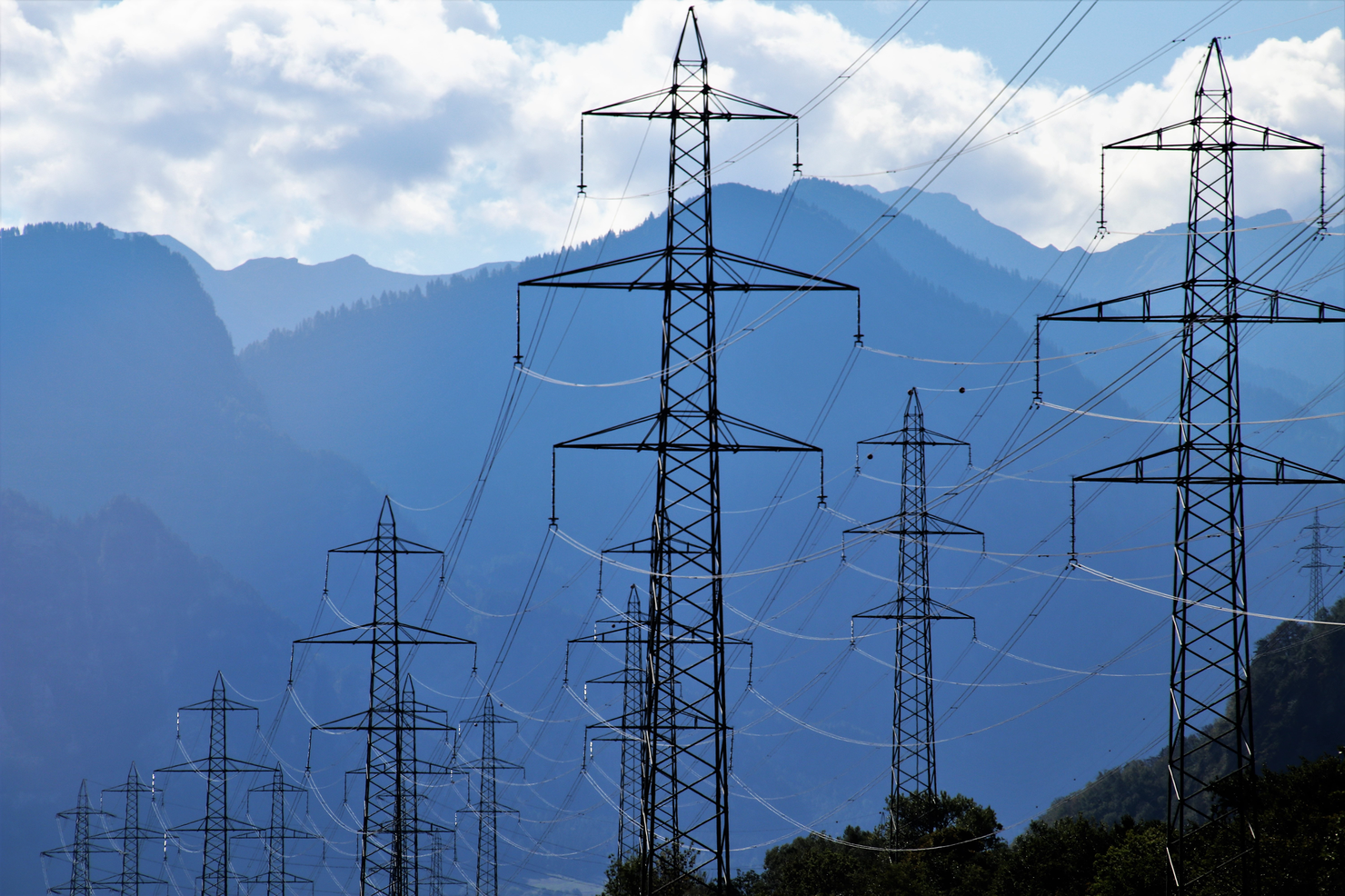In late September, California passed a legislation package to help achieve the state’s climate neutrality goals. This blog post analyzes aspects of the legislation and describes how they work to reduce emissions, promote affordability, and more.
A redwood-sized legislative climate policy package fell into place in California this fall, and its impact has so far hardly been heard around the nation. For several reasons, it is the second-most-important climate policy development in the United States in over a decade after the Inflation Reduction Act. For the first time, a policy package aligns carbon pricing with a strategy for electricity affordability in a coherent vision for state action.
The importance of this package is not immediately apparent because it involves over a half dozen separate pieces of legislation. The flagship law that readers may have heard about is AB 1207, led by Assemblymember Jacqui Irwin (D-CA), which reauthorized California’s emissions trading program through 2045. This is legacy-defining legislation passed with bipartisan supermajorities in the California State Assembly and Senate. As the state’s Independent Emissions Market Advisory Committee wrote in its most recent annual report, reauthorizing the program was particularly important to “encourage cost-effective emissions reductions and provide certainty to market participants, who are making long-term investment decisions that will be affected by the program’s evolution.” In the overall scheme, AB 1207 actually introduces only a few key adjustments reflecting the ongoing success of the market. But in doing so, it affirms the state’s climate commitments and energy policy leadership.
The companion legislation to AB 1207 is SB 840, led by Senator Monique Limón (D-CA), which puts new guardrails in place for the use of revenues from the emissions trading program. Governor Gavin Newsom formally rebranded the carbon emissions market as “cap and invest” to emphasize the role of revenues in driving climate policy outcomes.
The program issues a declining number of emissions allowances each year. Almost half of the allowances are sold in quarterly auctions, yielding almost $5 billion in proceeds per year and over $33 billion since 2013, which accrue to the Greenhouse Gas Reduction Fund. SB 840 mandates that the amount going to high-speed rail is limited, but assured, at $1 billion per year. Otherwise, the law directs specific revenues to fund clean transit and rail, community clean air programs, wildfire resilience, clean energy and agriculture, and climate-focused innovation. Prior law already ensures that at least 35 percent of proceeds benefit disadvantaged communities.
Under SB 840, businesses can still use offset credits in place of allowances to cover up to 6 percent of their emissions—for example, through forest restoration projects. This provision preserves the incentive to find the least expensive ways to mitigate emissions. Critics of offsets have questioned their actual environmental contribution and their diversion from emissions mitigation. SB 840 addresses the concern by having the California Air Resources Board (CARB) evaluate the performance of offsets in 2026 and periodically review offset protocols in line with international standards like Article 6.4 of the Paris Agreement. The legislation also calls for CARB to develop protocols for carbon removal and identify nature-based solutions as a priority for allocating investment funds. Concurrently, AB 1207 brings offsets “under the cap,” meaning that the number of emissions allowances issued in a future year is reduced by the number of low-cost offsets brought into the program, aligning California with the practice in Washington State.
Various other features contribute to managing the cost of the program. AB 1207 returns to CARB the authority to determine the number of free allowances businesses need to remain competitive with unregulated out-of-state rivals. This new shift reverses legislation in 2017 (AB 398) that took the authority away from CARB and generously set free allocation for all businesses without considering the trade exposure that varies among industries. If this reform leads CARB to reduce the free allowances for industry, the state could auction more allowances and raise more revenue for investments. Environmental justice advocates were among those calling for reforms to free allocation and the offset program—these changes likely would not have occurred in this suite of legislation without their voices.

With these changes, it appears linkage with Washington State is finally ripe. One can expect linkage will be an element of new regulations in 2026 to implement these new laws. My colleagues and I have estimated that linkage, if it occurs, could increase California’s near-term allowance price, currently about $32 per metric ton of carbon dioxide, by $2 to $4 and reduce Washington’s price (now at $64) by about $30. The price increase in California would slightly erode the push toward affordability, but its long-run benefits are much more substantial. Linking California and Washington’s carbon markets would solidify the durability of carbon pricing in both states and enhance investment opportunities for clean technology on the West Coast, boosting California’s influence on national policy outcomes. Moreover, we find that linkage could reduce emissions regionally by 50 million tons, because it would reduce the allowances issued in Washington by pulling the state’s carbon price down from its price ceiling, where additional emissions allowances are made available.
An element of emissions mitigation in the long run is the role of carbon capture. In the newly minted SB 614, the state reversed its moratorium on new pipelines for captured atmospheric carbon dioxide while advancing safety regulations. The state also makes a small but meaningful down payment for piloting and demonstration projects of direct air capture technologies with $20 million in innovation funding through SB 40. SB 643 allocates $50 million to carbon-removal purchases.
Another new energy-related law, SB 237, streamlines the permitting for new oil wells, a move that addresses the intermediate-term issue in the transition to clean transportation by retaining in-state fuel supply and refining capability. New fossil fuel infrastructure does not align with environmental justice concerns; however, expanded investment in air-quality monitoring through SB 352 is a win for environmental justice advocates.
The biggest win for households, though, is the elevation of affordability as a pillar of California climate policy. Two ideas are paramount. First, economists generally consider a carbon price to be the most efficient way to reduce emissions; every ton of emissions reduced due to California’s cap-and-invest program displaces a ton that would be reduced using regulatory measures at a greater cost. Second, carbon pricing collects substantial revenues that can be used to reduce electricity costs for households, a priority of the new legislative package.
Electricity ratepayers also benefit from SB 254, a new law that extends and roughly doubles the existing California Wildfire Fund, with the additional cost split between ratepayers and utility shareholders. The law limits utility profits from wildfire-mitigation investments and will stabilize the effect of wildfire liability on utility credit ratings, which will lower electricity rates for consumers. It also creates a Transmission Infrastructure Accelerator tasked with coordinating transmission planning, as well as accelerating financing and permitting for clean energy infrastructure. Five percent of the value of freely allocated emissions allowances received by electricity utilities must be allocated to the Transmission Accelerator Revolving Fund. This new law also authorizes state ownership of new transmission facilities.

Most visible to households will be the reassignment of the California Climate Credit, funded through the consignment sale in auctions of allowances originally received for free by utilities. The proceeds from the sale are directed as credits to utility customers and range in value depending on the service territory of those customers.
On average, electric utility customers currently receive $120 or more per year, and natural gas customers receive over $65 per year. By 2030, credits currently received by natural gas utility customers will be reassigned to electricity customers. Credits will be larger in disadvantaged communities. Moreover, these credits will concentrate in the four-month summer season when electricity bills are the highest. By my calculations, this reform of the California Climate Credit could reduce electricity expenditure for a representative household by 10 to 30 percent.
Thirteen years ago, at the outset of the emissions market, using auction proceeds to fund consumer credits twice a year that did not vary with electricity consumption was thought to be a smart policy design because maintaining high electricity prices would help reduce electricity use and promote energy efficiency. Today, however, expanding the use of electricity in transportation, buildings, and industry is a central strategy for decarbonizing the economy, and high electricity prices are an obstacle to achieving that goal. Moreover, economists have shown that electricity prices are inefficiently high in California, even accounting for environmental impacts, and especially relative to the price of gasoline and natural gas. These prices currently discourage electrification. However, California’s climate policy strategy calls for greater use of electricity, so directing the allowance value to reduce electricity rates makes sense.
Complementing these climate policy measures is AB 825—legislation that creates a new, independent organization to oversee the existing Western Energy Imbalance Market and an Extended Day-Ahead Market. The law authorizes California utilities and the state’s Independent System Operator to participate in voluntary regional energy markets, which has been forecast to save consumers over $1 billion per year and to reduce electricity-sector emissions by over 50 percent through greater investments in renewable energy resources throughout the region.
Finally, reflecting an all-of-state approach is AB 39, which requires local governments to develop an electrification plan that includes goals for electric vehicle charging and electrification of buildings, and which prioritizes low-income households, renters, small businesses, and disadvantaged communities. This new requirement is important as local governments are the gatekeepers for land use permitting that shapes future infrastructure. Local governments are required to create general plans as blueprints, or constitutions for future development, that are enforceable in all land use decisions.
In large and small ways, with short- and long-term horizons in mind, the package of legislative changes in California succeeds in giving shape to a remarkably coherent vision for a comprehensive energy transition. We will see if other states follow course.






